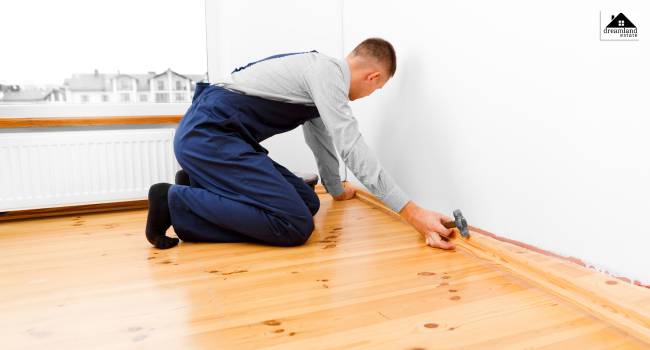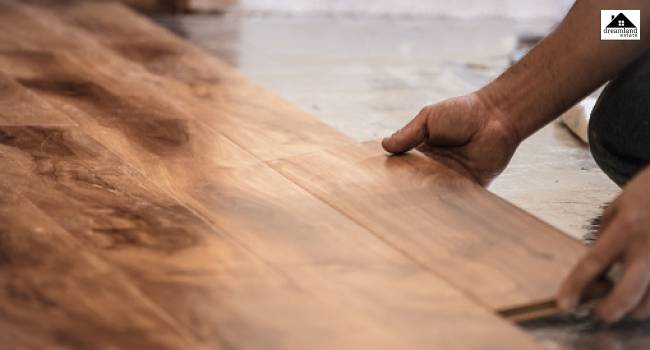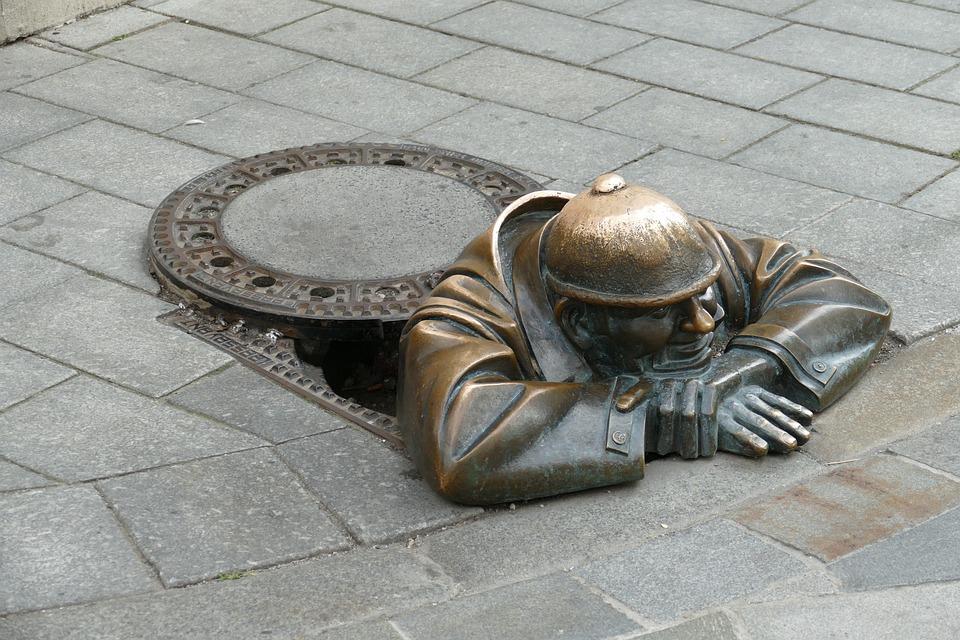How To Seal Laminate Floors With Floor Sealers?: A Comprehensive Guide

Are you looking for an easy guide to help you seal laminate flooring with floor sealers? You’ve come to the right place.
Laminate flooring is more famous than wood flooring; it has stomped the market pretty well. However, it is considered as one as it almost provides the same service as the wood floor does. The laminate floor looks like wood, which is how they are oriented, but they are absolutely fake wood.
Laminate wood floor sealer is costly, and many people cannot buy it for many other reasons, like the price, ambiance, and the condition of the house. Therefore laminate flooring is pretty much affordable and suits all kinds of environments. There is a water-resistant laminate flooring as well.
On the other hand, authentic wood floors are all wood. The most significant difference between the two is that solid wood floors are made up of 34-inch thick wooden planks that have been notched to interlock during installation.
In this article, we will be talking about laminate floor sealers. The pros and cons and also the way one can seal it properly, all of this information will be given in order. Read the article with patience till the end if you are interested in laminate floor sealers.
Understanding Laminate Floor Sealers
One of the most sought-after flooring solutions these days, especially among people who want something stylish and good quality for their homes, is laminates. But if you’re not sealing them properly, then laminate floors may not stay pristine for long.
A laminate floor sealer is a chemical product. It establishes a protective barrier against spills, scratches, and more mundane wear and tear. Moreover, it helps retain the shine of your floor and prevents moisture penetration.
When you are making the choice of sealer, you must consider factors like:
- The amount of foot traffic in the room is subject to
- The type of finish you want.
A glossy sealer will make your floor shiny, while a matte finish will make it relatively dull. The application of the sealer is pretty straightforward.
In any case, you need to follow what the manufacturer wants, so be sure to read the instructions well and bring everything as mentioned in the instructions. You should clean it first thoroughly before applying the sealer and then use it with a high-quality applicator for even coverage.
How To Use Laminate Floor Sealers?

The best way to use a Laminate floor sealer is to start by removing all the baseboards that are in place; you will be doing this to let the sealant protect the edges of the laminate that covers the space between the laminate and the structure. This method is not only beneficial for the laminate but also provides security to the sealant as it gets a grip rather than sitting on the top of the laminate, where it might get peeled off. Make sure you know these steps before using laminate floor sealer.
To the people who often ask if laminate flooring is waterproof, there is an article where we spoke about it all. Make sure to read it.
1. Make sure you go through the instructions that are given on the laminate floor sealant container before you start the process. There will be notes on how to clean the floor before moving with the laminate floor sealer. Your floor must be completely dry before the procedure, and also the optimal temperature range may vary.
2. If you think of removing the baseboards, ensure to do it carefully so that you can reinstall them. If the baseboard is painted, then you have to remove it and caulk with a utility knife where the board will meet the wall and also where it meets the other pieces.
3. To remove the baseboard, you can use a flat prybar with a thin piece of plywood placed between the prybar neck as well as the wall. Start pulling the baseboard away from the wall with fair pressure. Visit the edges of the baseboard and loosen the entire piece before getting it out from the wall. Mark the back of the baseboard to know where to reinstall it.
Laminate Floor Sealers For Urethane Sealants
Here is precisely how you can do it!

1. When your floor is all set for the action, open the sealant, then with a brush, apply a line of sealant all the way around the perimeter to cover the entire area which is going to be covered by the baseboard.
2. Repeat the same process all around the room. Take extra care with sealing around cabinets and door jams, especially when the lead is on the outside or when joining up the space like the bathroom with water-resistant flooring and laundry room where there is moisture to make its way onto the laminate.
3. While sealing between the boards, do this after dinging the perimeter. Plan the entire work so that you don’t feel confused about doing what you are doing. The brush you will be using should be narrow enough to seal the seams without painting the majority of the board. Be neat, as you only need to focus on the thin line of sealant at the sem.
Laminate Floor Sealers For Silicone Caulk
Follow these to get the best out of it!
1. For silicone caulking, cut the smallest possible hole at the end of the caulk tube. Squeeze out all the caulking while you run it over the seam. Use the seam as a guide for the caulking tube.
2. Remove the extra and smooth the caulking with your wet finger or gloved finger; you can even use a knife to even it out.
Laminate Floor Sealers For Both Types Of Sealant

1. Remove the floor vent covers and make sure you seal the area between the edge of the laminated floor and the subfloor. Let it dry as per the manufacturer’s instructions before you replace the vent covers.
2. Once the sealant gets dry, you have to replace your baseboards. Do not use the same nails as the high chances are for them to get bent during the removal; use fresh ones.
3. Putty the nail holes once the baseboard has been replaced, then add another coat of paint or varnish to the baseboard to seal it and cover the fact that it has been removed and rebuilt.
Laminate Floor Sealers – Pros And Cons

This is a quick list of pros and cons that will help you understand what is going to be the good result after laminating floors and the bad results. It applies for both, whether you leave your installation as it is or goes move forward with the process.
Pros
- Spill protection is great with the correct sealant.
- When you decide to seal the laminate floor of the kitchen or go for bathroom laminate flooring, there are lesser risks of subfloor damage from a large spill or leak.
- It is very inexpensive, and you can afford it.
- It is as well very easy to apply when laminating a floor.
Cons
- There are some laminate flooring brands that are not designed to be sealed. Avoid them.
- A laminate floor can become dangerous as it becomes slippery after the application of the sealant.
- You have to maintain the instructions on sealant by the manufacturer or else be ready to face the void floor warranty.
How To Prepare For Sealing
Here’s a handy, dandy guide on how to prepare for sealing:
1. Clean Up: Wipe down the surface thoroughly. Dust and dirt can inhibit the seal. If there’s any grease or oil, use a degreaser to clean it out.
2. Dry Thoroughly: Moisture is a big No-No! Allow the surface to dry entirely. Moisture can prevent sealant adhesion.
3. Prime (If Necessary): If your substrates are porous, such as wood or unpainted drywall, prime first to ensure better bond formation.
4. Apply the Sealant: Install the sealant with a caulking gun so that it goes on smoothly and steadily. You can use a caulking tool to shape the bead and wipe off excess sealant.
5. Let It Cure: Patience is Key! This sealant needs to cure completely following the manufacturer’s instructions. This may take about 24-48 hours.
Post-Sealing Care
So, you’ve just completed sealing your laminate floors, and they look fantastic! Now, take care of them. Here’s a quick guide.
Wait it out: The most important thing is patience. Let the sealant cure ultimately. This usually takes 24-48 hours.
Gentle cleaning: Once they cure, you can clean your floors using a soft mop or cloth and mild cleaner or even just warm water. Never use harsh chemicals, abrasive cleaners, or steam cleaners.
Watch the water: Although sealed laminate flooring is more resistant to water, it is not waterproof. Steer clear of standing water and clean spills promptly.
Scratch protection: Place felt pads under furniture legs and do not drag heavy objects across the floor.
Regular maintenance: Reapply the sealant periodically so that the protective layer is maintained, especially in high-traffic areas.
Troubleshooting Common Issues with Laminate Floor Sealers
Let’s say you’ve sealed your laminate floor, but something just doesn’t feel right. Don’t worry, let’s troubleshoot!
Cloudy or Hazy Finish
Too much sealer was applied. Next time, apply in a thin, even coat.
Poor ventilation when applying and after. Ensure good airflow during the application process and let it ventilate after.
Appears uneven or streaked
Applying too unevenly. Use a lint-free cloth or applicator pad to apply the sealer evenly.
Wrong Sealant: Always select the correct type of sealant to apply to your laminate flooring.
Water Spots or Damage
Sealant Deterioration: If you notice that the sealant has deteriorated, be sure to apply it again
Water Damage: Fix any leakages and water damage issues as soon as possible
Peeling or Bubbling
Poor Surface Preparation: The floor was not clean or dry before applying the sealant
Faulty Sealant: The sealant applied may be incompatible with your laminate floor.
If you are still experiencing problems, call a flooring professional. They can give you advice and solutions tailored specifically to your situation.
Safety First!
Here are a few things to remember before you seal your laminate floors:
Ventilation, Ventilation, Ventilation: Windows and doors! Good ventilation is vital for the dispersal of fumes from the sealer.
Protective Gear: Make sure to wear gloves, safety goggles, and a mask to protect your skin, eyes, and lungs.
Fire Safety: Sparks keep flying. Don’t have any open flames or smoking materials nearby.
Child and Pet Safety: Curious little ones and furry friends can be hazardous. Keep them out of the way while you are caulking.
First Aid Kit: Accidents happen. Prepare for the unexpected. Keep a first aid kit nearby.
Read the Label: Always follow the manufacturer’s instructions. They know best!
Frequently Asked Questions (FAQs):
Yes, you can surely select laminated roofs, polyurethane and silicone caulking are two powerful sealants.
You may make your laminated flooring weatherproof by using one of the following five methods: To avoid damage, use silicone. Fill the Expansion Gap with caulk. Apply a coat of polyurethane to the protective coating.
A laminate floor is a cost-effective and long-lasting alternative to wood flooring. Laminate flooring is a flexible substance that looks like wood or tile. Its strong top layer is resistant to staining and varnishing.
Wrapping It All Up
Here you go with all the necessary details about how to laminate floor sealers. We have tried to give all the information that will help you understand everything about the topic.
Leave a comment in the comment section and let us know how helpful this article is to you.
Read Also:











Leave A Reply